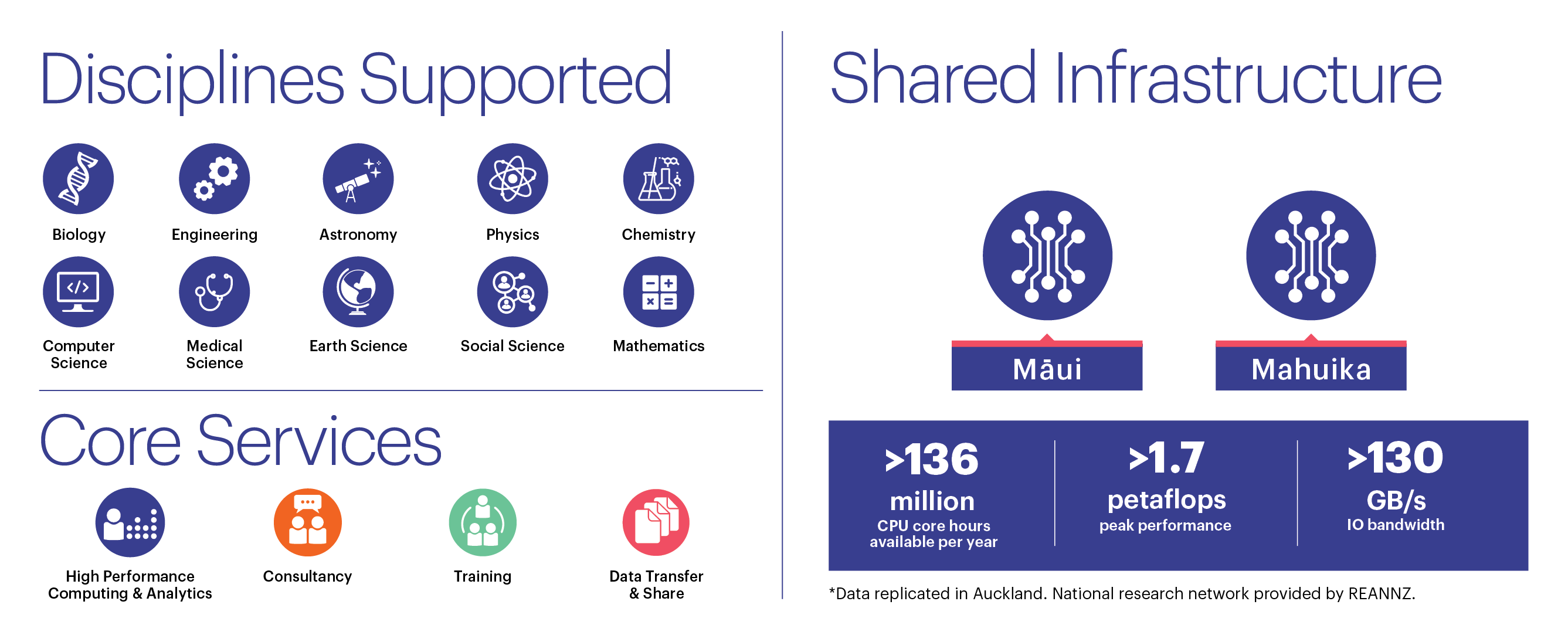Supercomputers and super cool science - NeSI and Antarctic Science Platform sign Memorandum of Understanding
NeSI is pleased to announce the signing of a Memorandum of Understanding (MOU) with the Antarctic Science Platform.
The purpose of the Platform is to conduct excellent science to understand Antarctica’s impact on the global earth system, and how this might change in a +2°C (Paris Agreement) world. The Platform supports four large-scale research projects that fall under two main Programmes; the Antarctic ice-ocean-atmosphere system in a warming world, and Ross Sea Region ecosystem dynamics in a warming world. The Platform’s Modelling Hub fellows have already benefited from this partnership with NeSI, and other researchers are soon to follow suit.
Antarctic Science Platform Director Nancy Bertler says the Platform deeply values its access to this supercomputer resource.
“This partnership is critical for our future projections work. By having access to this world class supercomputing resource, our modellers are enabled to create ever improving forecasts that increase the resilience of New Zealanders and can guide how we best respond to climate change challenges," she says.
“Our modelling hub covers a range of disciplines from ecological modelling to big data analysis. We hope that with the help of NeSI’s leading technology and expertise we can develop platforms to achieve a new paradigm shift where different models (such as ice sheet, ocean, atmosphere or sea ice models) can talk and inform each other.
“The collaborator organisations that championed NeSI from the beginning, The University of Auckland, NIWA, the University of Otago and Manaaki Whenua as well as MBIE, have paved the way for our Antarctic researchers to deliver excellent scientific outcomes.”
NeSI Director Nick Jones acknowledges the HPC capabilities of NeSI’s collaborators are critical across a growing breadth of research in New Zealand, both within universities and CRIs, and more widely in Crown agencies and private industry.
"This is an exciting collaboration, enhancing the capabilities and support we offer to New Zealand's Antarctic science community," he says. "Our hoamahi in the modelling hub offer a great exemplar of a collaborative model of science - we’re seeing collaboration transform how science is done in New Zealand as we collectively address our most demanding challenges.
“As a collaboration itself NeSI welcomes such partnerships - whakawhanaungatanga, our work building shared understanding helps us connect with a research community's aspirations and goals. Together, we can then respond to their needs - be it related to computational power, data management, computational thinking, or other advanced digital research capabilities - and better equip their researchers to deliver new and valuable insights in their fields at both local and global scales."
Pictured below, team members from NeSI and the Antarctic Science Platform gathered on a Zoom call for a virtual 'signing' and celebration of the MOU.

About the Antarctic Science Platform
The purpose of the Antarctic Science Platform is to conduct excellent science to understand Antarctica’s impact on the global earth system, and how this might change in a +2°C (Paris Agreement) world. The Platform supports four large-scale research projects that fall under two main Programmes; the Antarctic ice-ocean-atmosphere system in a warming world and Ross Sea Region ecosystem dynamics in a warming world. The Platform is funded by the Ministry of Business, Innovation and Employment for $49 million over seven years. For more information, visit https://www.antarcticscienceplatform.org.nz/.

About the New Zealand eScience Infrastructure
Driven by the needs of researchers for high-performance productivity, New Zealand eScience Infrastructure (NeSI) designs, builds, and operates a specialised platform of shared high performance computing (HPC) infrastructure and a range of advanced research computing services. NeSI’s collaborators – the University of Auckland, NIWA, the University of Otago, Manaaki Whenua - Landcare Research – alongside the Ministry of Business, Innovation & Employment (MBIE)’s SSIF Fund play an essential role in this national platform by investing in the infrastructure, employing NeSI team members at their institutions, and enabling NeSI to connect with and respond to the evolving needs of research communities. Together with MBIE, NeSI and its collaborators ensure computational research projects in New Zealand are backed by the power, expertise, and support necessary to make them a reality.






